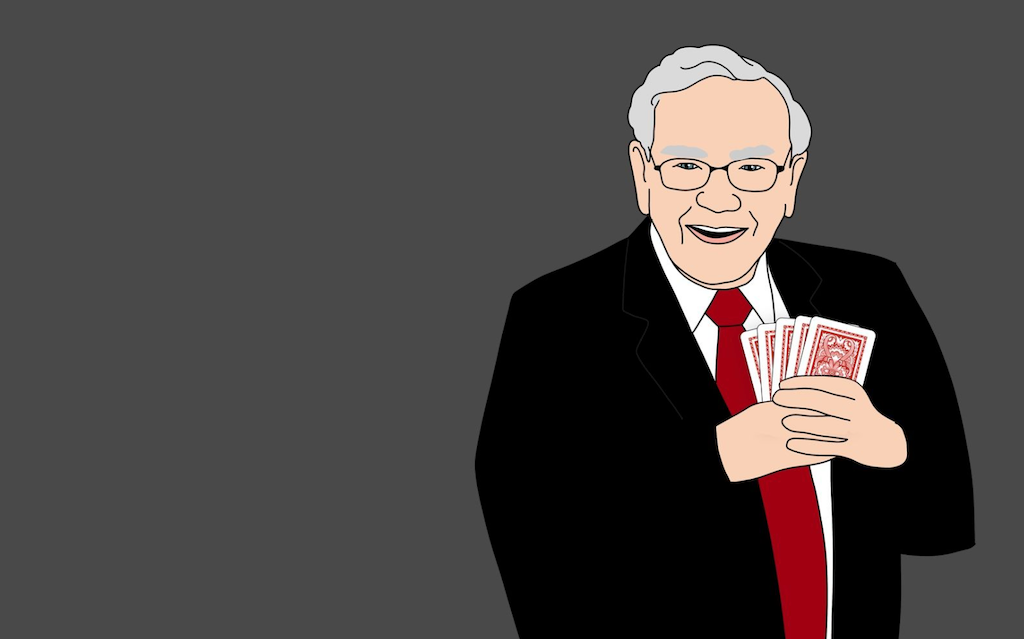Leadership
Buffett’s Latest Homebuilder Bet Reshapes The Balance of Power
Berkshire Hathaway’s investment reentry into D.R. Horton and Lennar signals more than stock market timing. It affirms which builders will endure — and which may struggle — as housing’s tide recedes ... at least for now.

When Warren Buffett moves, markets pay attention. Berkshire Hathaway’s disclosure last week that it had taken fresh stakes in D.R. Horton and Lennar—two of America’s largest homebuilders—comes at a moment when the housing market feels fragile, uncertain, and in many ways stalled.
On the surface, the move looks like a classic Buffett contrarian play: buying into leading operators at a time when affordability is crushed, incentives are rising, and investor sentiment is dim. Beneath the surface, though, it signals something more: a shifting balance of power in U.S. homebuilding, one that increasingly favors the best-capitalized, most resilient enterprises.
For everyone else—from foreign-backed players to multi-regional privates to local independents — the Oracle of Omaha’s wager serves as both affirmation and warning.
A Familiar Maxim
Buffett is famous for saying:
Only when the tide goes out do you discover who’s been swimming naked.”
In housing, that tide has receded. Mortgage rates remain elevated, incentives are escalating, and margins are compressing. Even large publics like Horton have acknowledged that “the trend is still pointing toward slightly higher incentives,” while executives at Builders FirstSource warn that conditions on the ground may be worse than the major builders’ earnings calls suggest.
In that environment, Berkshire’s choice to back Horton and Lennar is more than a bet on stocks. It is a bet on survivorship, on the capacity of scale operators to navigate downturns without losing their footing, and on their ability to seize share as weaker players falter.
Reading the Signal
This isn’t the first time Buffett has tested the waters in homebuilding. In 2023, Berkshire quietly amassed positions in Horton, Lennar, and NVR, only to unwind most of them within a year. As Lance Lambert notes in an analysis on the latest Berkshire gambit, that quick reversal clashed with Buffett’s long-standing rule that if you aren’t willing to own a stock for ten years, you shouldn’t own it for ten minutes. Now, with $191 million in Horton shares and nearly $800 million in Lennar stock, Berkshire is back.
The timing matters. After a bruising spring, builder valuations softened. Analysts began to price in sharper margin compression, and sentiment sank. Buffett’s reentry suggests he views that pullback as an opportunity rather than a red flag. For him, Horton and Lennar represent not just companies, but systems —organizations with the capital, land access, and operational discipline to grind through uncertainty and come out stronger on the other side.
Four Tiers and a Tilted Playing Field
His move also sharpens the contrast across the fragmented U.S. homebuilding landscape.
- The public giants—Horton, Lennar, Pulte, NVR, Taylor Morrison, KB, and others—command liquidity, access to bond markets, and national reach. They can adjust pace, absorb incentive costs, and continue land acquisition at scale. Buffett’s bet underscores their central role.
- The foreign-backed private portfolios, from Berkshire-owned Clayton Homes to Japan’s Sekisui House, Sumitomo Forestry Group, Iida Group, and Daiwa House, bring patient capital and a growing U.S. presence. They are not just competitors but, in many markets, consolidators.
- The well-capitalized multi-regional privates—think Shea Homes, Ashton Woods, David Weekley, Perry Homes, or Highland, and a few others — still have access to institutional equity or structured financing. Their growth is selective, opportunistic, and carefully hedged.
- The regional and local independents, reliant on bank financing and often on personal guarantees, face the steepest climb. For them, today’s conditions echo 2007–2011, when thousands of private builders vanished or were absorbed in a wave of consolidation.
In other words, the tide is indeed receding — and it is exposing just how uneven the footing is across these tiers. After a post-COVID run of "BTE" – better than expected – performance, demand pull, steady revenue, negligible competition in the form of existing home sales and even rental, and big gross margins, now, those tables have turned.
And they've turned into a bank-financed private homebuilder's nightmare.
Implications for Each Tier
- For the Publics:
Expect more investor scrutiny, but also tailwinds as “piggyback” investors follow Buffett’s lead. Their ability to balance incentives with starts will be the benchmark everyone else is measured against. - For the Internationally-Backed:
Expect them to double down, matching publics’ resilience. Japan’s capital-rich builders, in particular, will see this as validation of their U.S. growth push. - For the Privates with Institutional Backing:
Opportunity exists to capture share in selected regions, but only if discipline is fierce. This group can thrive—but the margin for error is thin. - For the Local/Regional Independents:
This is where the Buffett signal feels like a warning flare. Bank-dependent operators are in the tightest squeeze, just as they were in 2008. Yet history shows many will adapt: focusing on niches, deepening ties with buyers and trades, or leaning into community credibility where publics can’t replicate authenticity.
The Strategic Logic
Why now? Three reasons stand out.
First, the U.S. remains structurally underbuilt. Even if affordability is at a generational low, demographics—from Millennials aging into family formation to Gen Z entering the market—guarantee long-term demand. Buffett is positioning for when the logjam breaks.
Second, Berkshire’s housing footprint is already vast. Clayton is the nation’s top manufactured home producer and a top-10 builder overall. Add in subsidiaries like Johns Manville, Shaw, Acme Brick, and MiTek, and Buffett is effectively reinforcing customers of his own supply chain.
Finally, consolidation is inevitable. As happened after 2007, well-capitalized players will acquire land, assets, and even companies at discounts. Horton and Lennar are positioned to be consolidators, not casualties.
Buffett is betting that today’s turbulence sets the stage for tomorrow’s dominance.
Lessons from the Last Downturn
The parallels to 2007–2011 are striking. Back then, small and mid-sized builders disappeared in staggering numbers, and national players emerged larger and more dominant. Survivors weren’t just lucky; they were disciplined. They preserved liquidity, focused relentlessly on customer trust, and retooled their models around nimbleness and agility to fit new realities.
The same dynamics are taking shape now. Incentives may erode margins, but they keep absorption moving. Customer loyalty, often a strength of smaller privates, can still be a lifeline. And flexibility—whether in land positions, house plans, or trade relationships—remains the difference between riding out the cycle and drowning in it.
What Builders Should Take Away
Buffett’s latest wager isn’t just a financial move. It’s a signal to the industry. In a market defined by volatility and imbalance, capital will flow toward resilience, discipline, and scale.
For the publics, it is both a challenge and a vote of confidence. For the foreign-backed privates, it is validation of their U.S. expansion. For the multi-regional privates, it is a reminder that discipline is everything. And for the regional and local independents, it is a warning: the tide is out, and the scrutiny is unforgiving.
Yet history also teaches that many will adapt. Smaller builders have survived every past downturn by finding niches, deepening relationships with buyers and trades, and leaning into community credibility that larger players can’t replicate
The Builder’s Daily Take
Buffett’s reentry into Horton and Lennar confirms what the industry already senses: a turning-point moment may be near. The current conditions — tight credit, rising incentives, and affordability gridlock — are unsparing. But they also create the conditions for the next round of growth and consolidation.
For leaders across the homebuilding spectrum, the question is not whether the tide is going out. It already has. The question is how each enterprise — public or private, national or local — will look once the waters recede. Buffett has placed his bet on Horton and Lennar.
The rest of the industry must decide how, and in what, it will place its own.
MORE IN Leadership
Insurance Costs Now Define Housing’s Affordability Equation
Insurance premiums have soared nearly 70% in five years, now consuming almost one in ten housing dollars. Homebuilders who plan for insurability early protect both margins and buyer trust.
Homebuilding’s Hardest Test: Change As Core Competency
Residential development leaders are being forced to lead across timelines. Resilience means solving today’s air pockets with tomorrow’s customers in mind.
When Unknowns Define The Future of Homebuilding Strategy
Uncertainty is the only constant: from Fed moves and mortgage lock-in to tariffs, labor shortages, and policy risks. Moody’s economist Cristian deRitis and the Focus On Excellence summit in Denver will arm builders with frameworks to plan, act, and lead through turbulence.
